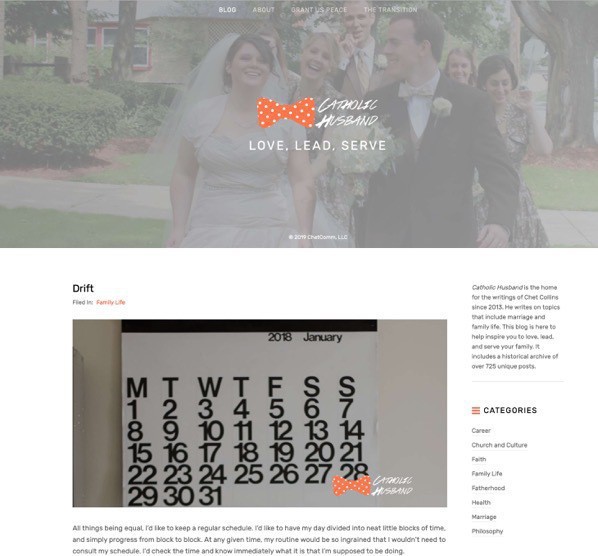Controlling My Presence

The IndieWeb Summit was held at the end of June in Portland. I didn’t attend, but through my involvement with Micro.blog, I’m familiar with the ideas and tools of the IndieWeb. The Internet has a tremendous capacity for open communication, and it’s available to anyone who wants to participate.
For far too many people, Facebook is their personal website, homepage, and basecamp for their web presence. For over a decade, I certainly used it that way. I’d share photos, updates, and satire news links for my friends to read. When I launched the Catholic Husband blog in 2013, I created a brand page. I’d post new articles, polls, and associated content. On the surface, it seemed to work, until it didn’t.
I like to tinker, and so when I changed my branding, I wanted to go back and change photos, update links, and make edits. The thing is, there isn’t a Facebook tool for handling your old posts. The only way to delete old posts is to basically delete your brand page, or even your entire account. No mass edits, nothing. The same held true for Twitter, except that there used to be 3rd party tools that would allow you to mass delete old tweets. I couldn’t tell you if those tools still work or if they were destroyed in Twitter’s war on innovation.
It’s been over a year since I deleted my Facebook/Instagram/Twitter and other social media profiles. I now control my domain and my presence on the web.
You may hear some people say that they control their presence, but what does it really mean?
I love to visit personal websites because they say a lot about the person. Web design is an incredibly expressive art. The layout, colors, formatting, and even fonts communicate beyond the mere text. It’s a statement of individuality, and a cue to my mind that this website represents a real person.
When Facebook is your website, they control everything. They control the layout, the colors, how your profile looks, and they change it whenever their business interests demand. They show you what they want to show, how they want to show you, and when they want to show you. And your profile, save for a few pictures, looks exactly like 2 billion other people’s profiles. No individuality, no expression.
Controlling your presence is about more than just the visual elements. It’s about the content itself. You can add, edit, subtract, sort, file, organize, and structure your content in any way that you please. And you can change it whenever you like.
I use RapidWeaver to design and publish most of my websites. When version 8 rolled out last summer, I got a whole new suite of tools for my blog posts. I now can control metadata for individual posts with ease.
Since I control my own website, I went back and redesigned the feature images for all 725 of my blog posts. Those posts represent my collective writing and publishing going back to the Spring of 2013. I used photos from Unsplash and a template that I created in Pixelmator. It was a lot of work to update all of those photos, but now every post has its own unique, branded photo. The visual difference is amazing. The experience is now 100% consistent, no matter which page or post you initially land on.
As I made those updates, I noted some posts that needed edits, changes, and typographical errors that needed to be fixed. I quickly and easily edited six year old blog posts because I wanted to improve my site.
Owning your content, managing your domain, and controlling your website is something that anyone can do. It takes some learning, lots of experimenting, and help and support from the community. To put it simply, when you do own and control your content, it’s yours to do with as you please.
July 10, 2019